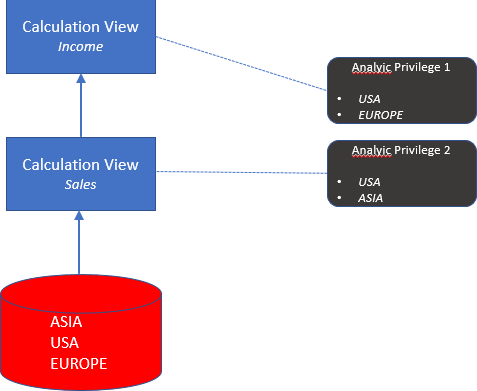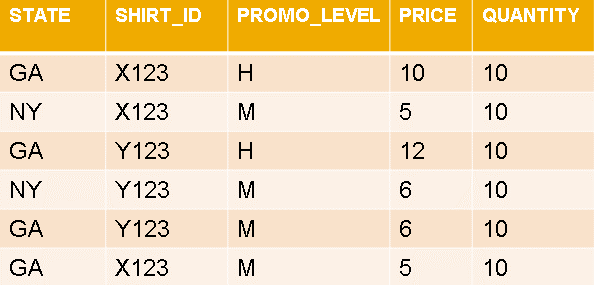|
Introduction to SAP Certified Application Associate - SAP HANA 2.0 SPS06 Exam
HANA Application (C_HANAIMP_18) preparation guide helps you to get focused on exam. This guide also helps you to be on C_HANAIMP_18 exam track to get certified with good score in the final exam.​
Exam Syllabus: C_HANAIMP_18 SAP Certified Application Associate - SAP HANA 2.0 SPS061. Describing the Technology and Deployment Scenarios of SAP HANA Demonstrate an understanding of the key technology of SAP HANA Books: HA100 OR LH – LR SAP HANA Modeling 2. Building calculation views Demonstrate detailed knowldege of building a data model using all types of calculation views and nodes. Books: HA300 OR LH – LR SAP HANA Modeling 3. Configuring modeling functions Demonstrate that you can implement common calculation view modeling functions, such as filters, parameters and hierarchies. Books: HA300 OR LH – LR SAP HANA Modeling 4. Optimizing the performance of models Demonstrate that you can follow best practices for building high performance models and use the provided tools to monitor performance. Books: HA300 OR LH – LR SAP HANA Modeling 5. Managing and administering models Demonstrate that you can setup the modeling ennvironment and use the tools provided to manage the data models. Books: HA300 OR LH – LR SAP HANA Modeling 6. Working with SQL and SQL Script in models Demonstrate that you can apply SQL and SQLScript in SAP HANA modeling. Books: HA300 OR LH – LR SAP HANA Modeling 7. Securing models Demonstrate that you can implement security features to prevent unauthorised access to data models. Books: HA300 OR LH – LR SAP HANA Modeling SAP C_HANAIMP_18 Certification Sample Questions and AnswersTo make you familiar with HANA Application (C_HANAIMP_18) certification exam structure, we have prepared this sample question set. We suggest you to try our Sample Questions for HANA Application 2.0 (SPS06) C_HANAIMP_18 Certification to test your understanding of SAP C_HANAIMP_18process with real SAP certification exam environment. C_HANAIMP_18HANA Application Sample Questions:-01. What can you discover using Data Lineage? Please choose the correct answer. a) Access statistics b) Underlying calculation views and tables c) Frequency of load d) Data changes since last refresh Answer: b 02. In a calculation view, you use a rank node to identify the purchase orders with the highest total amount. The expected output includes the top orders that represent 15% of the total numbers of orders placed by each customer. How do you set the Aggregation Function and Result Set Type properties of the rank node to get the expected result? Please choose the correct answer. a) Aggregation Function: Sum Result Set Type: Absolute b) Aggregation Function: Rank Result Set Type: Absolute c) Aggregation Function: Row Result Set Type: Percentage d) Aggregation Function: Sum Result Set Type: Percentage Answer: c 03. Which of the following approaches can be used to implement union pruning? There are 2 correct answers to this question. a) Define a constant value for each data source in the Union node. b) Define a restricted column and include it in both data sources of a union. c) Define the cardinality between the data sources. d) Define union pruning conditions in a pruning configuration table. Answer: a, d 04. One SQL analytic privilege authorizes you to view data for Europe and the USA in the sales calculation view, and another one authorizes you to view data for Asia and the USA in the income calculation view. The income view uses the sales view as a data source. Both calculation views check SQL analytic privileges. What data can you visualize when consuming the income calculation view? Please choose the correct answer. a) Data from the USA b) Data from Europe and the USA c) Data from Europe, Asia, and the USA d) Data from Asia and the USA Answer: a 05. Why do you implement column tables instead of row tables? There are 2 correct answers to this question. a) Data volumes are large b) Data is suitable for partitioning c) High performance for transaction processing is required d) Records will be updated frequently Answer: a, b 06. What does SQLScript provide to extend standard SQL? There are 2 correct answers to this question. a) Integrated source code version management b) Support for ABAP syntax c) Additional data types for the definition of text and spatial data d) Features to push processing to the database Answer: c, d 07. In SAP HANA Series Data processing, what is the definition of a profile? Please choose the correct answer. a) A variant of data set, such as actual, forecast, or long-term plan b) The granularity of time intervals, such as day, hour, or minute c) The values that you are storing, such as temperature, energy consumption, or speed d) The object you collect data against, such as house, building, or town Answer: d 08. Which of the following tasks are required to get the database objects created in the HDI container? There are 2 correct answers to this question. a) Build the MTA project. b) Explicitly build the HDB module instead of the MTA project. c) Create at least one namespace in the HDB module. d) Assign the project to a space to which you have developer authorizations. Answer: b, d 09. Which of the following are types of calculation view? There are 2 correct answers to this question. a) Cube b) Virtual c) Dimension d) Composite Answer: a, c 10. You are building a cube calculation view with an aggregation node that calculates total sales, based on the data shown in the graphic. The price may vary based on SHIRT_ID and PROMO_LEVEL only. The calculation is Total Sales = PRICE * QUANTITY. How do you ensure accurate results, regardless of the columns in the query output? Please choose the correct answer. a) Set the Keep Flag property for SHIRT_ID b) Set the Dynamic Partition property for SHIRT_ID and PROMO_LEVEL. c) Set the Calculate before Aggregation property. d) Set the Keep Flag property for SHIRT_ID and PROMO_LEVEL. Answer: d
0 Comments
Leave a Reply. |
|



